Technical Tips
Contactors
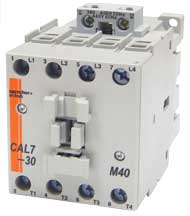
October 2018
UL Flame Class Ratings for CA7 Contactors
What is the UL94 flame class of a CA7 contactor?
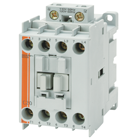
June 2018
Converting a CA7 Contactor with an AC Coil to a DC Coil
Can I swap coils from AC to DC (or vise versa) within the same contactor?

June 2018
Electronic interface Functionality on CA9 Contactors
What is the ‘ EI ‘ electronic interface function? And – how does it work on the CA9 contactors?
Are there options to use / or not use the ‘ EI ‘ electronic interface functionality on the CA9 contactor?
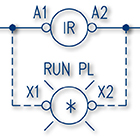
September 2017
Using an interposing relay with a CA6 Contactor
Can an interposing relay be used with CA6 Electronic coil contactors?
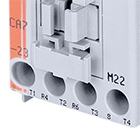
August 2017
CA7 Four Pole Terminal Designations
What are the terminal designations on the CA7-__-M__ 4-pole contactors?
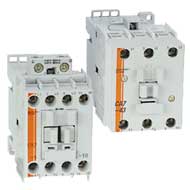
December 2016
Causes of Unexpected Contactor Noise
Chatter, humming or buzzing coming from a contactor indicates a problem and should be investigated. Here are three common issues that could cause unexpected noises from an installed contactor.

December 2016
CA6-420, CA6-630 or CA6-860 contactors with 24V or 48V AC or DC coils
Is there 24V or 48V AC or DC coil option for the 420, 630 or 860 amperage CA6 contactors?
There are no 24V or 48V AC or DC coil options available for the CA6-420, CA6-630 or CA6-860 contactors but the built in electronic interface offers an alternative.

March 2016
CA6-AT Control Terminal installation
Is there an instruction sheet for the CA6-AT1, CA6-AT2 and CA6-AT3 Control Terminals? What is the purpose of these terminals? Can they be used as control circuit taps using other contacts? What are the mounting hole and wire sizes for CA6-AT terminals?
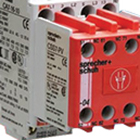
January 2016
Contactors & Relays: Safety vs. General Purpose
What are the distinctions between CAS7 Safety Contactors and CSS7 Relays versus General Purpose CA7 Contactors and CS7 Relays? Does the CA7/CA6 Contactor or CS7 Relay have safety ratings?
Quick Guide
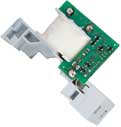
June 2015
CA7 AC Contactor sizes vs. Electronic DC
Is there a dimensional comparison of CA7 or CAN7 contactors with AC coils and contactors with Electronic DC coils? Are they the same size? The answer depends on the control voltage used for the electronic DC coil.
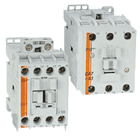
March 2015
Causes of Shortened Contactor Lifespan
A contactor was experiencing worn and burned out contacts about every 4 weeks. Find out the cause and possible solution.

March 2015
How to remove the CA7 side mount auxiliary
The small plastic latches that secure the auxiliary to the contactor can easily snap off when applying too much force. There are three easy steps for removing the auxiliary.
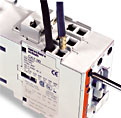
February 2015
Maximum number of Terminal Wires on CA7 Contactors
You can use multiple wires per terminal on CA7. When using multiple wires, all wires must be of the same type.

February 2015
Terminal markings on built in CA7 Contactor Auxiliaries
Series CA7 contactors in amperages 9 thru 23 have built-in auxiliary contacts. A circuit designer might need to reference these terminals on an assembly drawing.
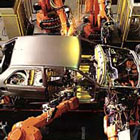
February 2015
Contactor Life Expectancy
How long is the real service life on a contactor under standard operating conditions? To determine this you need to know the rated electrical life, and the total number of operations expected out of the contactor.
Whitepaper

November 2014
Identifying reversing vs. wye-delta two contactor assemblies
Reversing contactors and elevator contactor assemblies look very similar. How do you tell the difference between them?

May 2014
Definite Purpose (DP) versus General Purpose (IEC) Contactors
How do you compare and cross reference a definite purpose contactor to an IEC general purpose contactor? Cross referencing a definite purpose contactor to an IEC contactor involves analysis of the application, not just a amps to amps comparison.
Whitepaper

February 2014
What are some possible reasons for welded contacts?
When a contactor is cycled too fast the silver alloy of the contact tips will heat up and become molten and then tack-weld on the next closing, which renders the contactor inoperative. So, the question becomes: what issues in the control circuit can cause excess cycling of the contactor?
Whitepaper

January 2014
How to Determine Coil Resistance of CA7 AC or DC Contactors
What is the resistance on my contactor coil? With an Ohm meter, the contactor coil resistance can be measured using the A1-A2 terminals of the coil. But how do you know if the measurement is correct?

August 2013
How to Apply a Contactor to a Lighting Application
Lighting applications present high inrush is a very short time frame, making it difficult to properly apply contactors.
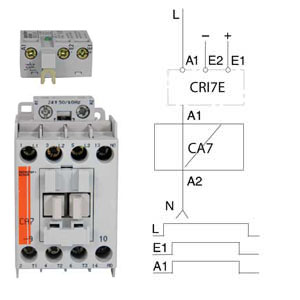
March 2013
How to reduce the size of a DC Power supply
The use of electronic DC contactors and control relays can reduce the size requirements of DC power supplies. The CRI7E external electronic interface is another way to reduce DC power requirements.

October 2012
How to read vibration specifications
Some technical specifications can be difficult to decipher. How do you read the vibration specifications for CA7 contactors and what do the specifications actually mean?
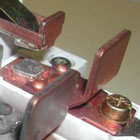
June 2011
CA6 Contact Inspection & Replacement
Maintenance and replacement of worn contacts can extend the life of your contactor.
Whitepaper

April 2011
Undersized Power Supplies can cause DC Contactor Coil Failures
Customers often select a marginally sized 24VDC power supply to offset costs compared to a CCT. This often leads to DC contactor coil failure and costly downtime. The standard features of improperly sized power supplies can inflict disaster on the contactor coils they are operating.
Whitepaper

March 2011
Premium Efficiency Motor Protection
Ignoring the effects of increased inrush of premium efficiency motors could lead to nuisance tripping and lost production time.
Whitepaper
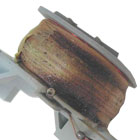
January 2011
Preventing Coil Burn Out
About 85% of all coil burn-outs are caused by low voltage resulting from insufficient control power. Field personnel can identify possible causes and prevent the death of contactor and/or relay coils.
Whitepaper
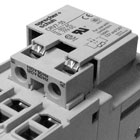
February 2009
Selecting Surge Suppressors
What is the purpose of a surge suppressor? What are the differences between the types of surge suppressors?
Whitepaper

July 2007
Auxiliary Contact Block Performance and Selection
A combination of many factors can affect the dependability, life expectancy, and suitability of an auxiliary contact block in any given application. Understanding the most important of those factors can help you select the best switch for your needs.
Whitepaper